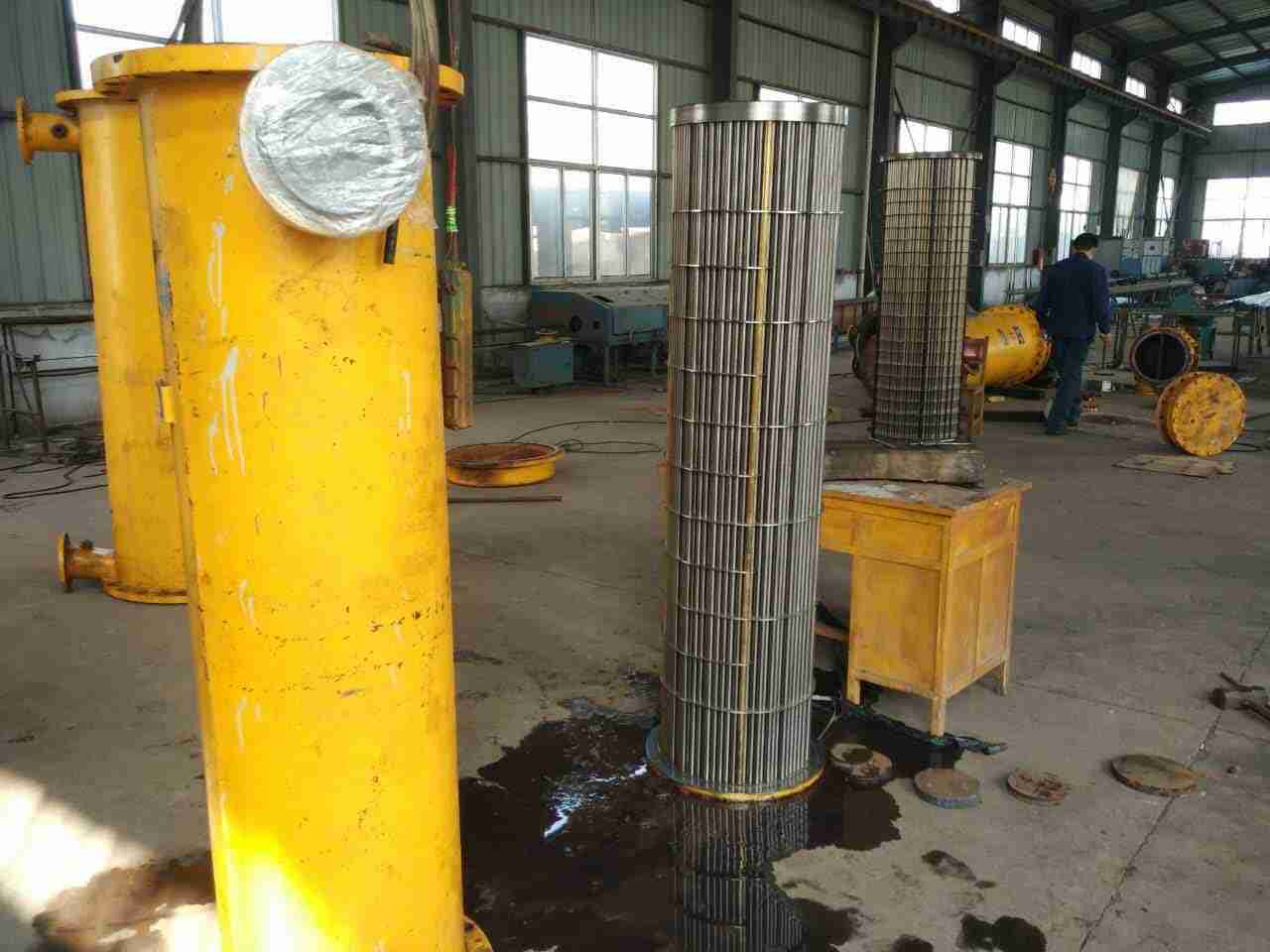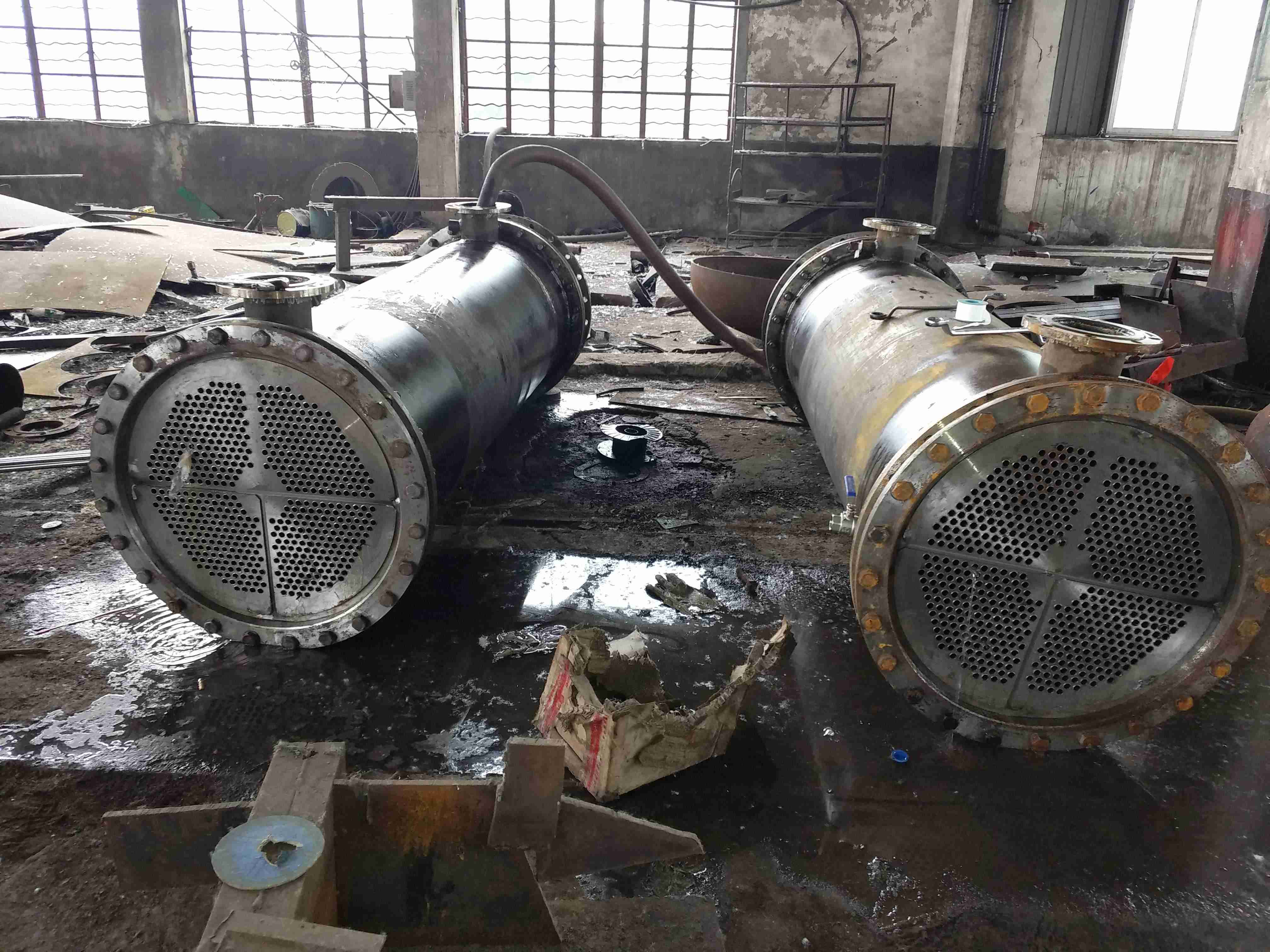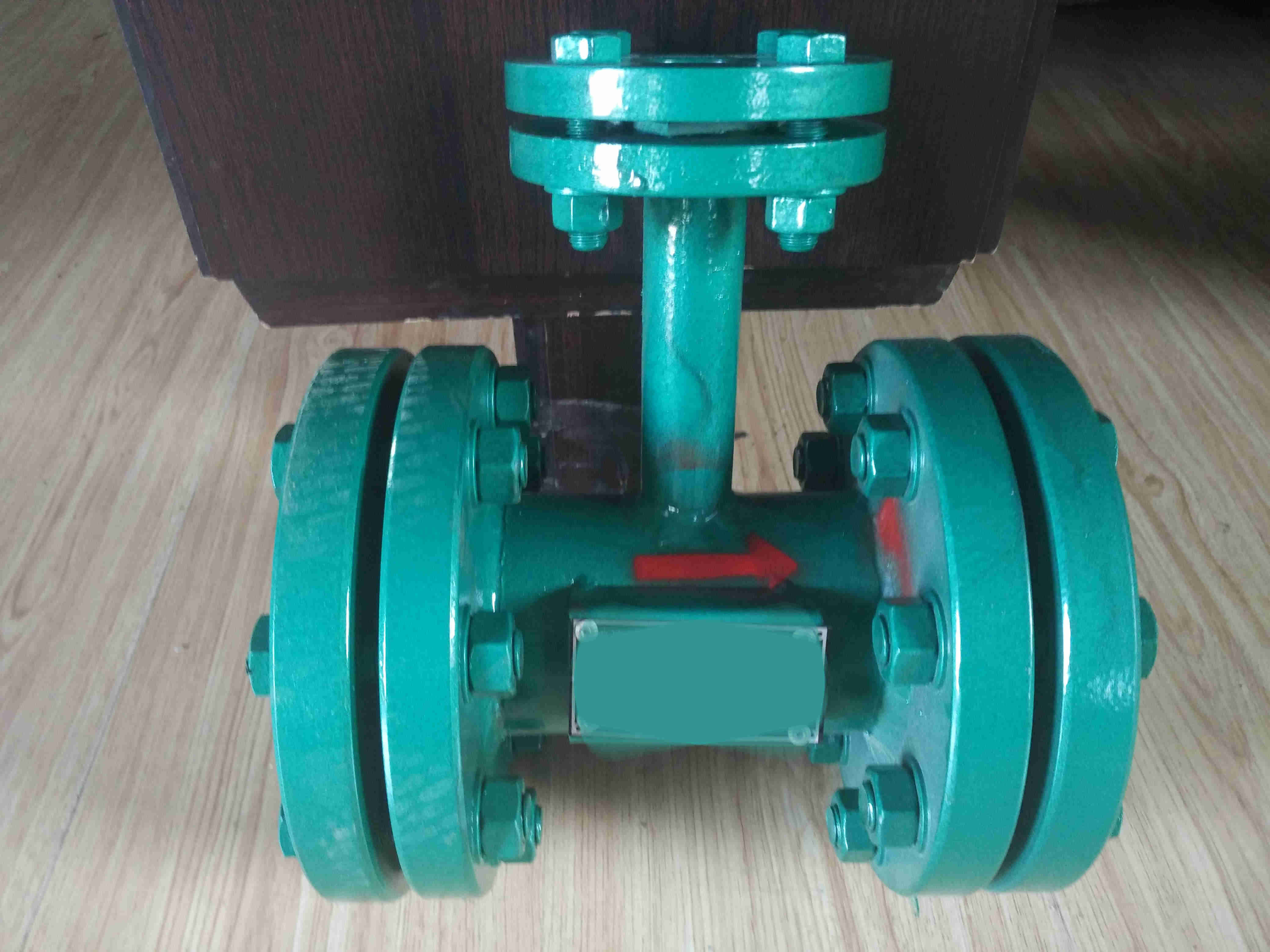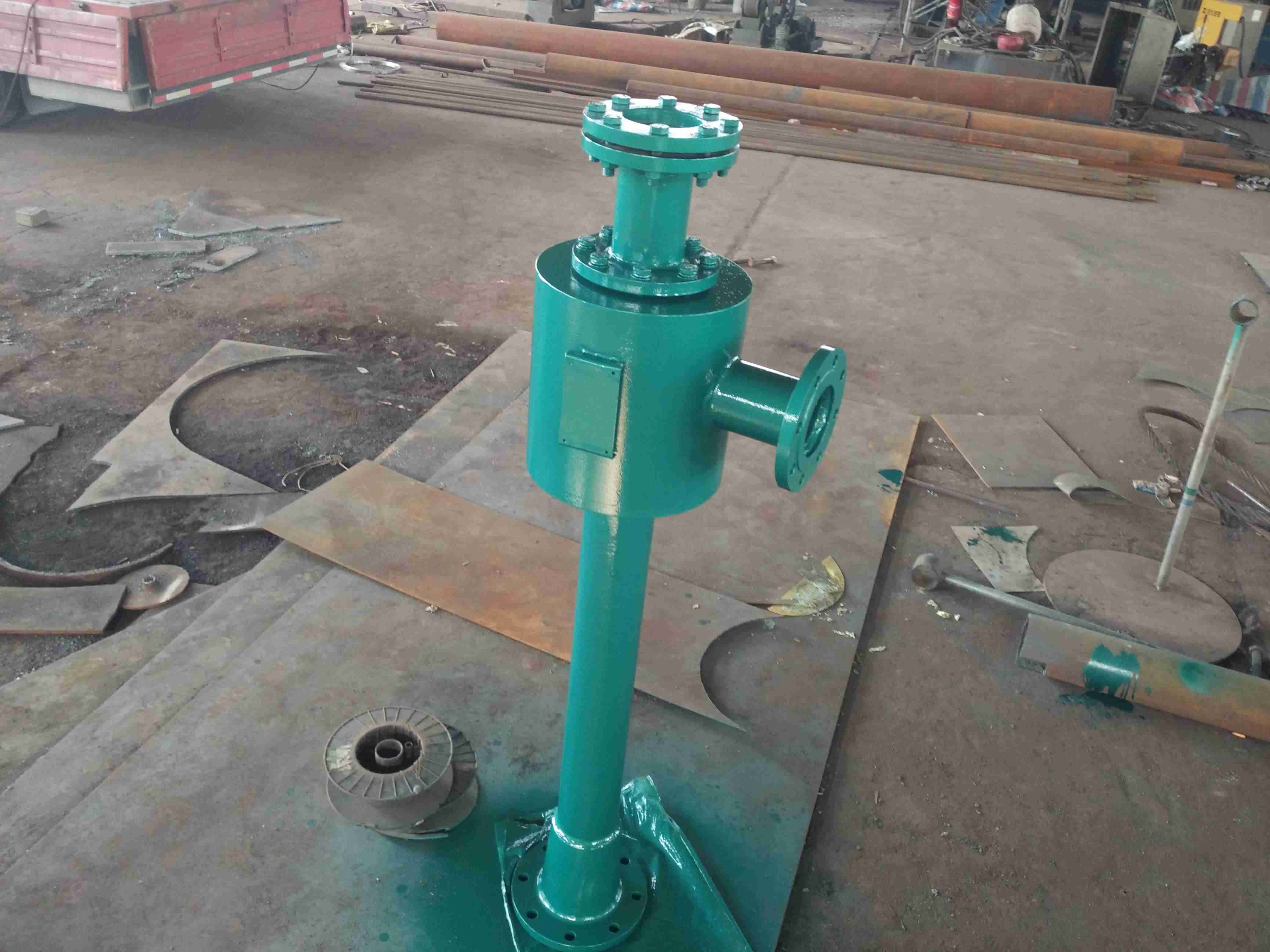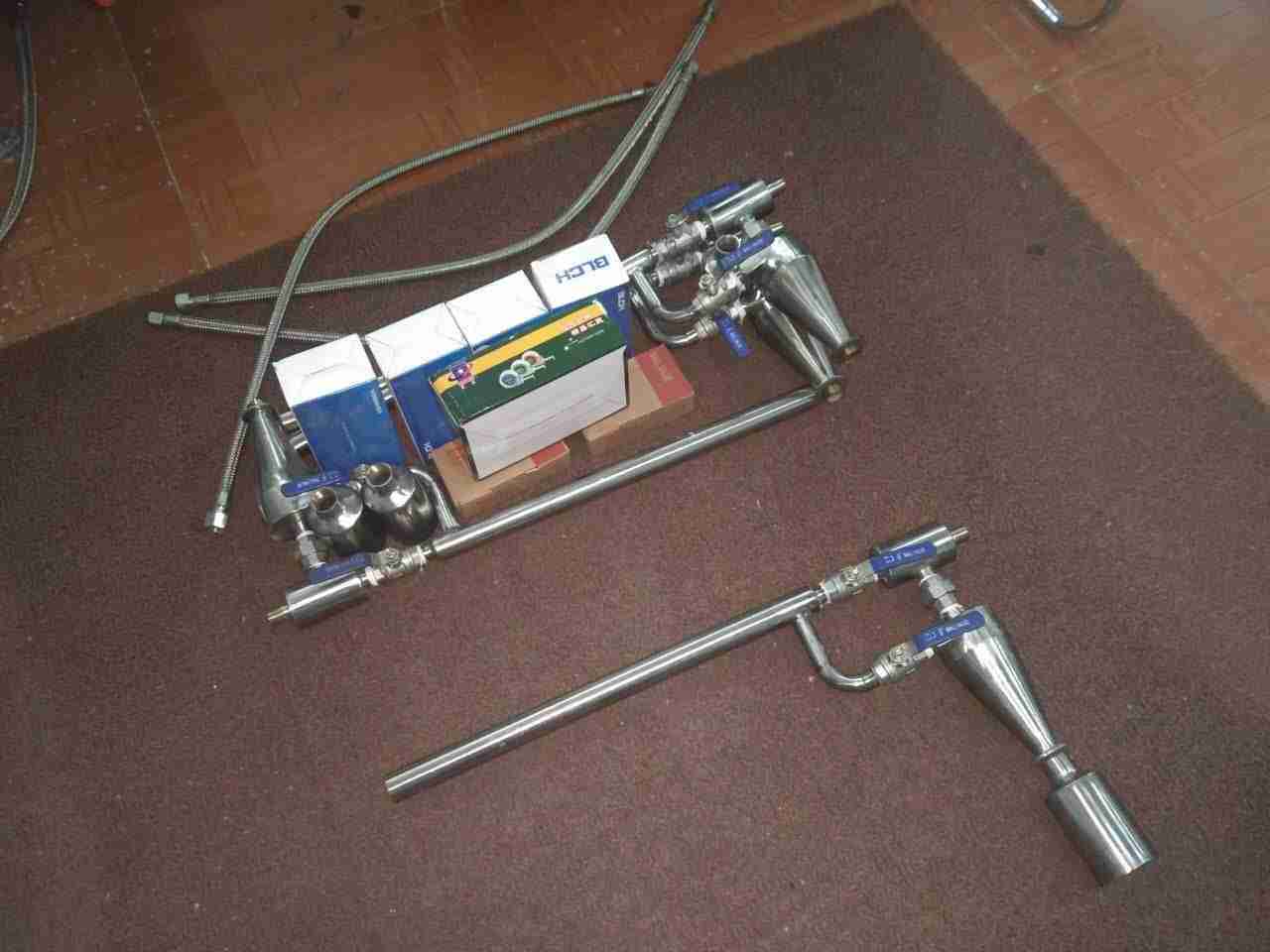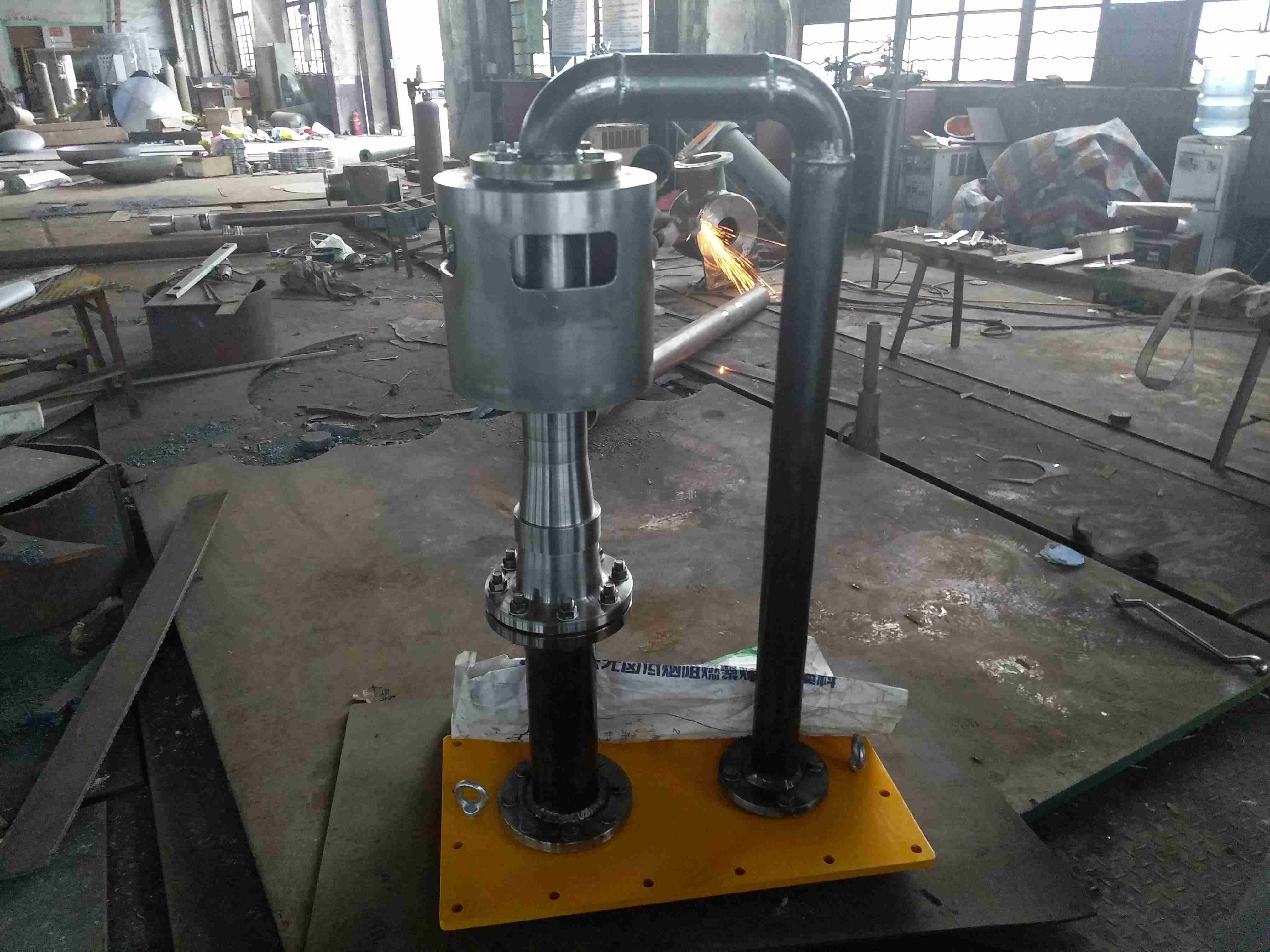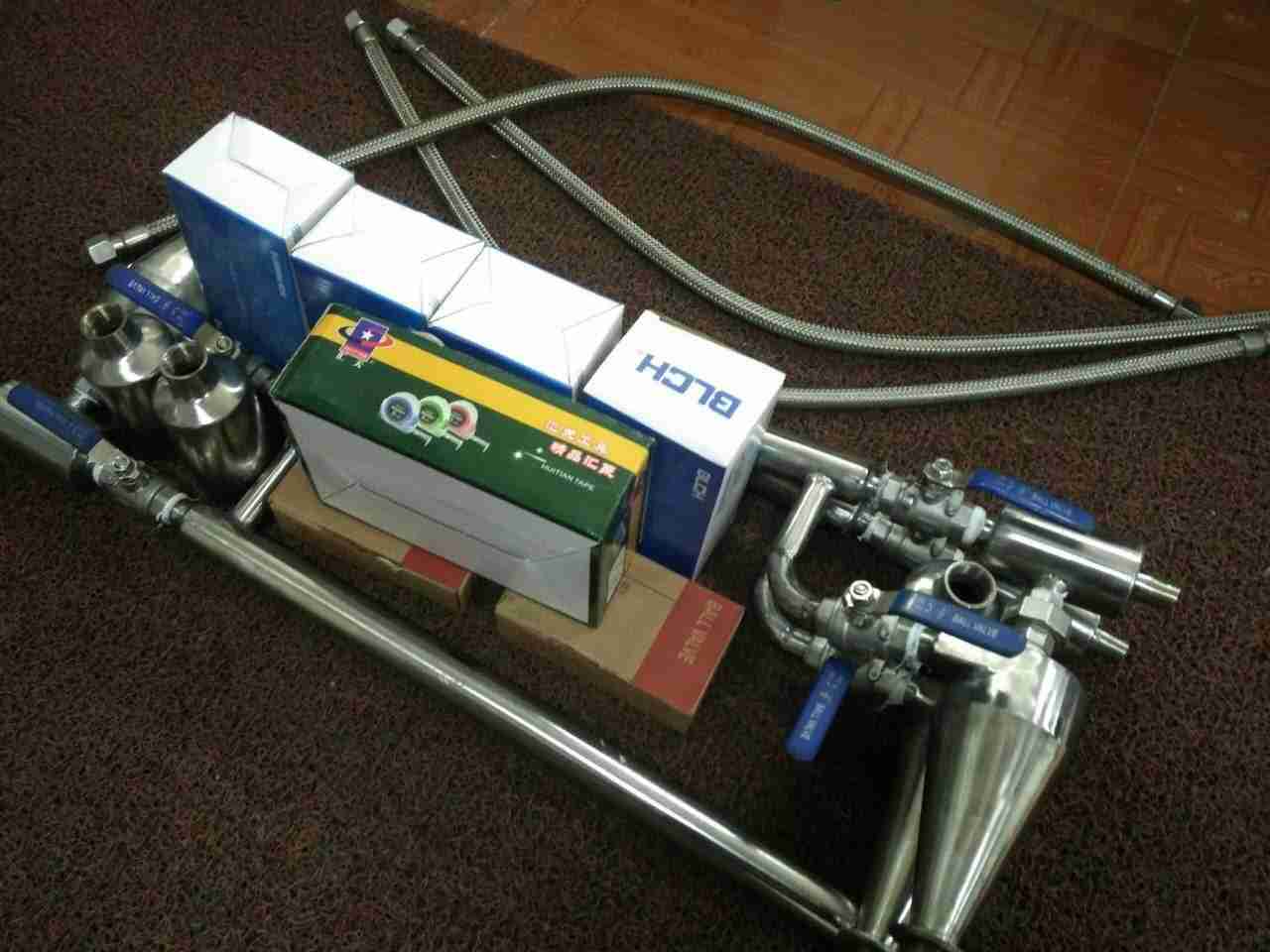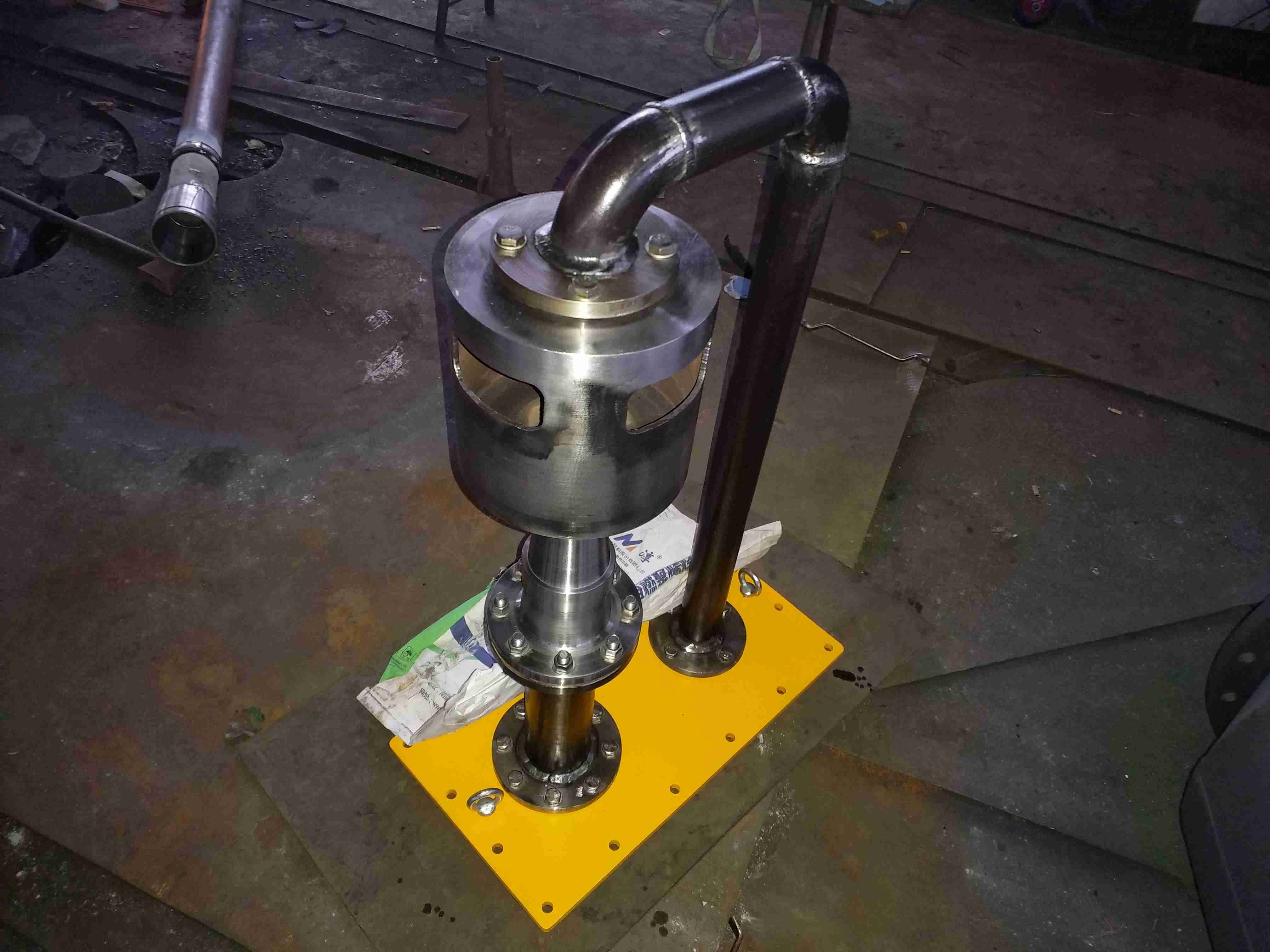The high-pressure heater, abbreviated as high-pressure heater, is composed of two main parts: a shell and a piping system. Steam condensation is set in the upper part of the shell cavity, and drainage cooling is set in the lower part. Water supply and outlet are set at the inlet and outlet pipes. When the superheated steam enters the shell, it can heat the feedwater inside the upper main spiral pipe. After the steam condenses into water, the condensed hot water can also heat some of the feedwater inside the lower drainage spiral pipe. The used condensate flows out of the body through the drainage outlet. This device has the advantages of low energy consumption, compact structure, small footprint, and low material consumption. It can also strictly control the drainage water level, drainage flow rate, and reduce the drainage end difference.
High pressure heater, high pressure heater overview:
High pressure heater (hereinafter referred to as high-pressure heater) is an auxiliary equipment for thermal power units. Its working principle is to use steam turbine extraction to heat boiler feedwater, thereby improving the output and thermal cycle rate of the generator unit. The high-pressure system is arranged in a clockwise, inverted, or horizontal manner, with U-shaped pipe bundles and dual flow. The water chamber is a self sealing structure.
-Introduction to the manufacturer's guidance for tube replacement and renovation:
Lianyungang Lingdong Factory produces its own auxiliary equipment for power plants, such as high-pressure heaters and low-pressure heaters. It focuses on the transformation of pipes for condensers and oil coolers, high-pressure heaters, and low-pressure heaters, in order to reduce costs for power plants. The root cause of the equipment is that Lisheng has a demonstration team for pipe replacement and transformation, and has undertaken pipe replacement for 16 absorbers in large power plants, including high-pressure heaters, low-pressure heaters, condensers, oil coolers, chillers, various heat exchangers, air coolers, and Ili Tianmei Chemical, There are interchangeable tube bundles inside the basic equipment, and we usually undertake tube replacement and renovation. Protect your device! Economically, let the equipment shine after replacing the tube bundle, and the results of operation and equipment are half of the cost of equipment! We have saved you the hassle of complicated procedures!
High pressure heater, high heating technology -:
1. High countercurrent overheating is beneficial for increasing the outlet temperature of feedwater;
2. A hemispherical water chamber is used for inlet, and the U-shaped pipe end of the water supply inlet is designed to prevent erosion;
3. Inner concave - sealed candle, with - hydraulic -;
4. Bowl shaped tube plate structure with good stress;
5. Advanced heat transfer design technology to maintain a high heat transfer coefficient;
6. A complete built-in three type heat transfer junction;
7. Efficient and efficient operation of the exhaust system;
8. Advanced anti vibration design, flexible and rigid pipe system support structure;
9. A well-designed reduction in resistance between the tube and shell sides;
10. Reliable nitrogen sealing design structure-
11. Lightweight and sturdy support for high-pressure water supply heater
12. Water level regulation and protection system - Design and match with instruments and valves.
Precautions for the operation and shutdown of high-pressure heaters:
(-) In order to prevent thermal shock generated during the start-up and shutdown process of the high pressure heater, random sliding start-up and sliding shutdown should be used for easy control of temperature change rate.
(2) During the start-up and shutdown process of the high-pressure heater, attention should be paid to controlling the rate of change in feedwater temperature from 1.2 to 1.5 ℃/min, and the maximum should not exceed 1.8 ℃/min.
(3) Start the high pressure heater one by one according to the pressure from low to high.
(4) When the high pressure heater is shut down, it stops one by one according to the pressure from high to low. The feedwater temperature will decrease by more than 100 ℃ when the high pressure heater is shut down with load, and the steam temperature will increase. Strengthen steam temperature monitoring, adjust boiler combustion in a timely manner, and prevent overheating.
(5) After the shutdown of the steam side of the high-pressure heater, it is necessary to determine whether the inlet steam of the high-pressure heater has been tightly closed based on the drainage temperature after the extraction check valve. Only then can the feedwater of the high-pressure heater be switched to the bypass and the outlet electric valve of the high-pressure heater be closed; Open the air release valve on the water side to prevent the inlet valve from leaking tightly, which may cause the water supply to warm up and cause pressure on the high-pressure water side pipe bundle.
(6) If the air valve on the high-pressure steam side needs to be opened due to work needs, it should be noted that the drain valve and emergency drain valve behind the extraction check valve should be closed to prevent affecting the vacuum of the condenser and causing vacuum failure accidents.
Precautions for the operation of high-pressure heaters
(-) High pressure water level protection - must be put into operation, and high pressure protection operation is strictly prohibited;
(2) When the heater is in normal operation, the exhaust valve of the high-pressure heater should be kept open, otherwise non condensing gas will affect the heat transfer of the heater and corrode the interior of the heater;
(3) During the operation of the unit, the operators should strengthen the monitoring of the high pressure heater water level and maintain the drain end difference of the high pressure heater between 5.6 ℃ and 11.1 ℃;
(4) The high-pressure heater is in operation, and the emergency drain control valve must be put into automatic mode and in a closed state. When the high-pressure water level rises or the emergency control valve does not open properly, and the output of the feedwater pump does not increase properly, it indicates that the heater has leakage. Therefore, it is requested to stop the heater as much as possible to prevent the high-pressure water column sprayed from leaking from damaging the surrounding pipes and expanding the number of leakage pipe bundles.
The impact of high-pressure heater leakage on the unit
The water side pressure of the high-pressure heater is much higher than the steam side pressure. When the heat transfer tube bundle leaks, the high-pressure feedwater on the water side enters the steam side, causing the water level of the high-pressure heater to rise, heat transfer, and affecting the safe and economic operation of the unit. The specific impact on the unit is as follows:
(-) After the high-pressure heater is released, it is necessary to promptly disconnect the high-pressure heater for treatment, otherwise it will cause the surrounding pipe bundle to be impacted by high-pressure water supply, resulting in an increase in the pressure of the discharge pipe bundle and an increase in the pressure of the discharge.
(2) After high pressure relief, due to the water side pressure being much higher than the steam side pressure, when the high pressure water level rises sharply and the water level protection is not activated, the water level will flood the extraction steam pipeline, and the steam carrying water will return to the steam pipeline, even enter the cylinder, causing a water shock accident of the turbine.
(3) After the high pressure boiler is disconnected, the feed water temperature decreases from around 260 ℃ to 150 ℃. In order to meet the unit load of the boiler, it is necessary to increase the coal consumption accordingly, enhance the heat absorption of the boiler water-cooled wall, lower the furnace temperature, delay the combustion of coal powder in the boiler, and cause the wall temperature of the heating surface tube of the boiler.
(4) After the shutdown of the high-pressure heater, it will also increase the last few steam flow rates of the turbine, exacerbating blade erosion.
(5) The shutdown of the high-pressure heater will also affect the output of the unit. If the output of the unit needs to be maintained, the monitoring of the turbine will increase the pressure, and the axial force of the blades and partitions after the stopped extraction port will increase. For the safety of the unit, it is necessary to reduce or limit the power of the turbine, thereby affecting the power generation.
(6) After the high-speed train is disconnected, the standard coal consumption for power generation increases by about 8g/kWh, resulting in a corresponding increase in unit heat consumption and an increase in plant electricity consumption rate.
(7) Due to the special structure of horizontal high-pressure heaters, the cooling speed of high-pressure heaters is slow and the cooling time is long. If the system is not strict, the cooling time will be long, directly affecting the target of high-pressure heater operation rate.
Reasons for high pressure heater leakage
(-) During the shutdown period of the equipment, inadequate maintenance measures were taken and the steel pipes were severely corroded.
(2) When the high-pressure heater is put into operation on the water side, the water filling speed is too high, the air valve on the water side is not open enough, and the exhaust is not smooth, causing pressure on the pipe bundle and expansion welding cracking.
(3) Due to insufficient heating time and improper control of temperature rise rate during the operation of the high-pressure heater, the steam from high temperature and high pressure enters the high-pressure heater, causing uneven heat transfer between relatively thick tube sheets and thinner tube bundles, resulting in huge thermal stress and causing thermal deformation and easy damage to the U-shaped tube.
(4) When the load of the unit is increased or decreased, the speed of load change is too fast, and the corresponding extraction pressure and extraction temperature will change rapidly. The feedwater temperature has not yet changed, and the U-shaped pipes and welds of the heater are prone to damage due to intense temperature alternating thermal stress. The U-shaped pipes of the heater are prone to damage and leakage due to long-term thermal fatigue.
(5) During the welding process of the high pressure heater steel pipe blockage, welding process defects were caused due to the presence of steam and water. During operation, uneven heating caused welding cracking and re leakage.
(6) During operation, if the water level of the high-pressure heater is not adjusted in a timely manner, the high-pressure heater operates at a low water level. Due to the gradual self flow drainage method adopted by our factory's high-pressure heater, some steam enters the drainage pipeline, causing two-phase flow of steam and liquid, which intensifies pipeline vibration and reduces the alternating stress generated by low-frequency vibration.
(7) Due to chemical corrosion caused by high pressure, the water quality regulations for the unit are as follows: the oxygen capacity of the water supply is less than 7 μ G/L, pH value between 9.2-9.6, long-term high dissolved oxygen in feedwater will cause corrosion and thinning of the U-shaped steel pipe wall, and relaxation of the expansion joint between the steel pipe and the pipe plate due to corrosion.
The phenomenon of high-pressure heater leakage
(-) High pressure water level signal alarm, high pressure water level rising, high pressure end difference increasing, far higher than the positive value.
(2) Due to high pressure relief, a large amount of water enters the steam side, and oxygen is gradually removed through drainage. In order to maintain a positive water level in the steam drum, the speed of the feedwater pump increases and the feedwater flow rate increases.
(3) After high pressure relief, due to heat transfer, the temperature of the feedwater decreases
Measures to prevent high-pressure heater leakage
(-) When starting and stopping, the high-pressure heater should be randomly started and stopped.
(2) When starting and stopping the high-pressure heater, pay attention to reducing the thermal shock and thermal stress of the heater. When the high-pressure heater is put into operation, it should be operated on the water side and then on the steam side. The speed of opening the manual or electric steam inlet valve should be slow. The temperature rise rate during operation and the temperature drop rate during shutdown must be controlled within the specified range, which is the main measure to prevent leakage of the high-pressure heater tube bundle.
(3) During operation, it is necessary to strengthen the monitoring of high and high water levels, and it is strictly prohibited to operate the heater at low or low water levels.
(4) Maintain a stable and positive water level, especially during the initial operation of the high-pressure heater. Do not neglect the water level adjustment of the high-pressure heater due to other operations. Timely activate the automatic drainage system to prevent water level fluctuations from exacerbating the vibration of the heater and lower heater tube bundles caused by the cooling of the high-pressure heater's drainage and gas-liquid two-phase flow.
(5) During normal operation, pay attention to observing and recording the drainage temperature of each heater, the opening of the emergency drainage control valve, and other parameters. If any abnormal changes are found, they should be carefully analyzed, the cause judged, and timely measures taken.
(6) If the high pressure water level is raised or the emergency control valve is not opened properly, and the output of the feed water pump is not increasing properly, it indicates that there is leakage in the heater. Therefore, it is requested to stop using the heater as much as possible to prevent the high-pressure water column sprayed by the leakage from causing severe blow damage to the surrounding steel pipes and expanding the number of discharge pipe bundles.
(7) When high pressure leaks are detected, even minor leaks should be immediately shut down, and operation should not be maintained due to small leaks. Because slight leakage can also flush adjacent pipes and cause large-scale leakage.
(8) After each positive shutdown, the water side of the high-pressure heater should be promptly checked for repair and treatment when the feedwater pump is shut down.
(9) Protection of water quality: Oxygen capacity of water supply < 7 μ G/L, pH value between 9.2-9.6, to prevent corrosion leakage.
(10) After the high pressure heater is shut down, the steam side is drained and closed, and a solution with a hydrazine content of 200mg/l (adjusted to pH 10 by adding ammonia) is added to the water side to seal the heater; Nitrogen gas with different pressures can also be injected into the high-pressure steam side and water side for maintenance.
Why is it necessary to use a low-pressure heater when the heater is put into use, and then a high-pressure heater?
Due to the higher quality of the extracted steam during high pressure testing, the heating effect is also affected, and the temperature is raised. If high pressure testing is started, the steam will have a greater thermal impact on the heater. Causing cracking of steel pipes, etc.
High pressure heater, working principle of high pressure heater:
A high-pressure heater, abbreviated as a high-pressure heater, is equipped with a steam condenser at the upper part of the inner cavity of the shell, a drainage cooling system at the lower part, and a water inlet and outlet at the ends of the inlet and outlet pipes. After the superheated steam enters the shell, the feedwater inside the upper main spiral pipe can be heated. After the steam condenses into water, the condensed hot water can also heat up some of the feedwater inside the lower drainage spiral pipe. The used condensate is drained out of the body through the drainage outlet 1.
High pressure heater, high pressure heating structure - description
High pressure heaters are equipped with superheated steam cooling and steam condensation (some high pressure heaters are equipped with drain cooling). The extracted steam from the turbine is cooled by superheated steam, and then enters steam condensation condensation to form drainage (the high pressure heater drain with drain cooling is set to continue cooling). The drainage is controlled by the drain control valve and discharged from the high pressure heater to the low pressure heater, The low-pressure high-pressure high-pressure drainage is controlled by the drainage regulating valve and discharged to the deaerator.
2.1 The water chamber is a cylindrical or spherical head structure with a dividing partition inside. The dividing partition divides the interior into two processes. The water chamber cylinder (or spherical head) is welded to the tube plate as a body, and the water chamber adopts a self sealing structure. When the water chamber is sealed, it is pre tightened with bolts (pre tightened bolts are directly connected to the sealing seat). When the water supply in the water chamber reaches a fixed pressure, the sealing seat will tighten the sealing ring, thereby achieving self sealing effect. The higher the water supply pressure, the more sealing energy it can achieve. The water side drainage outlet can discharge accumulated water in the water chamber during shutdown and maintenance, and can also serve as a nitrogen filling port. In addition, a stainless steel rectifier device is installed in the water supply area, which forms a uniform and stable flow of water through the rectifier device, greatly preventing the erosion of water on the heat exchange pipe mouth area.
2.2 The U-shaped tube is selected as the heat exchange tube bundle, which uses small diameter thin-walled heat transfer tubes with small external dimensions and high heat transfer coefficient. In order to effectively utilize the superheat of the extraction steam, the tube bundle is divided into two parts: superheated steam cooling and steam condensation (some high-pressure heaters are equipped with hydrophobic cooling). Reasonably determined the heat transfer area and resistance for different heating conditions, and considered a certain blockage rate, which can meet the requirements of high and large water supply flow conditions. Overheated steam is equipped with a casing and stainless steel impact plates are installed in the steam section to reduce the erosion of steam on the pipes and improve the thermal uniformity of the equipment.
2.3 The shell is made of pressure vessel steel plate rolled and welded, and the shell is equipped with running exhaust and starting exhaust interfaces to remove non condensable gases such as oxygen that affect heat transfer and corrode pipes, improving the thermal energy of the equipment.
2.4 High pressure protection device: In order to quickly disconnect the high pressure heater and continue to supply water to the boiler in the event of an accident, this high pressure heater is recommended to use a large water supply bypass system to ensure the safe operation of the unit. The automatic water supply bypass device consists of an electric level gauge (or water level differential pressure transmitter), hydraulic valves at the inlet and outlet of the high-pressure heater, solenoid valves, etc. When an accident occurs in the high-pressure heater (U-shaped pipe cracking or welding leakage), the shell side drainage water level rises and reaches the second high water level, the electric level gauge (or water level differential pressure transmitter) sends a signal, and the emergency drainage valve opens; If the water level continues to rise and reaches the cut-off water level, the electrical connection level gauge (or water level differential pressure transmitter) sends a signal, the solenoid valve opens, the inlet and outlet valves of the water supply are closed, and both high pressure heaters are disconnected simultaneously. The feedwater enters the boiler through a valve bypass. When the bypass of the high-pressure heater is used to feed water to the boiler, the high-pressure heater can be repaired and maintained
| 配機組功率(MW) | 蒸汽-壓力(MW) | 蒸汽-溫度(℃) | 給水設(shè)計壓力(MPa) | 給水工作壓力(MPa) | 給水流量(t/h) | 型號 | 配機組壓力 | 髙加型式 | 傳熱面積( ㎡ ) | 外型尺寸長×寬×高(水室內(nèi)徑)
(㎡) | 本體凈-(t) | 沖水-(t) |
| N6 | 0.85 | 250 | 7 | 5.8 | 32 | JG-20 | -壓 | 正立式髙加,U形管式髙加 | 20 | Φ550×3100 | 1050 |
|
| C6 | 0.85 | 300 | 50 | JG-50 | 50 | Φ600×4600 | 2120 |
|
| N12 | 1.6 | 250 | 65 | JG-65-2 | 65 | Φ650×4800 | 2680 |
|
| C12 | 1.77 | 300 | 109 | JG-100-2 | 109 | Φ900×5200 | 4950 |
|
| 25 | 1.57 | 300 | 16.7 | 14.7 | 120 | JG-120-4 | 高壓 | 正立式髙加,螺旋管式髙加 | 120 | 2080×2050×4380
Φ1500 | 11.45 | 18 |
| 1.67 | 339 | JG-120-5 | 120 | 13.67 | 20 |
| 50 | 1.90 | 329 | 220 | JG-200-4 | 200 | 2080×2050×5380
Φ1500 | 16.05 | 21.6 |
| 3.34 | 396 | 16.05 | 21.6 |
| C50 | 1.95 | 325 | 280 | JG-200-5 | 18.76 | 24.2 |
| 3.55 | 398 | 18.76 | 24.2 |
| 75 | 1.67 | 350 | 17.7 | 300 | JG-280-1 | 正立式髙加�,U形管式髙加 | 280 | 1600×1450×7990
Φ900 | 11.6 | 21 |
| 2.84 | 400 | JG-280-2 | 280 | 12.6 | 22 |
| 100 | 1.67 | 339 | 410 | JG-350-5 | 正立式髙加�����,螺旋管式髙加 | 350 | 2100×2050×8010
Φ1500 | 22.26 | 37 |
| JG-350-6 | 350 | 26.53 | 41 |
| 125 | 21.6 | 17.2 | 400 | JG-490-1 | -高壓 | 正立式髙加,U形管式髙加,大開口水室高加 | 490 | 2400×2400×7700
Φ1190 | 27.1 | 35 |
| JG-450-1 | 450 | 26.9 | 33 |
| 200 | 22.6 | 18.6 | 670 | JG-530-1 | 正立式髙加���,U形管式髙加 | 530 | 1700×2300×8470
Φ1200 | 23.8 | 35 |
| 2.35 | 310 | JG-530-2 | 530 | 23.8 | 35 |
| 1.67 | 339 | JG-530-3 | 530 | 25.4 | 37 |
| 300 | 27.4 | 23.5 | 1000 | JG-1000-1 | 亞臨界 | 臥式髙加�,U形管式髙加 | 1000 | 9650×2340×2450
Φ1500 | 48.9 | 66 |
| 3.92 | 326 | JG-1000-2 | 1000 | 49 | 66 |
| 1.67 | 339 | JG-900-3 | 900 | 48.4 | 63 |
| 600 | 29.4 | 24.5 | 2000 | JG-1600-1 | 1600 | 10500×2660×3100
Φ2000 | 81 | 108 |
| 3.33 | 330 | JG-1950-2 | 1950 | 98 | 125 |
| 1.67 | 339 | JG-1850-3 | 1850 | 101 | 128 |
Attention: The above specifications and parameters for high-pressure heaters are for reference only and are mainly based on international design
High pressure heater, warm reminder for high pressure heater
High pressure heater reminder 1: To prevent rust, the shell side (steam side) of the high-pressure heater has been filled with nitrogen before leaving the factory, and the pipe side (water side) has also been dried. Therefore, during installation, it is important to discharge the nitrogen gas inside the shell side to ensure that the internal pressure on the shell side is completely released before proceeding with installation and cutting work. The groove of the welded joint should be cut and repaired by the user according to the diagram.
High pressure reminder 2: During installation and storage, users should check the nitrogen filling pressure on the shell side. When the pressure (gauge pressure) is -0.0196MPa, nitrogen should be added. In addition, check the sealing condition of the pipeline opening, and if there is any damage, seal it in a timely manner.
High pressure warning 3: When the high pressure heater is shut down, attention should be paid to maintenance and reliable measures should be taken to ensure that the equipment is not corroded during the shutdown period.
Reminder 4: As the water chamber and tube plate have undergone heat treatment, any welding, including welding insulation hooks and nails, is prohibited on the water chamber and tube plate.
Reminder 5: Due to the fact that the water chamber cylinder, sealing seat, and inlet and outlet of the water chamber are all 20MnMo forgings, it is strictly prohibited to carry out any welding at the above parts during disassembly and assembly.
Reminder 6: During the disassembly process, it is strictly prohibited to damage any cover.
High pressure warning 7: Safety valves must be installed between the water supply inlet and outlet pipelines to prevent pressure.
High pressure warning 8: The lifting device installed in the water chamber cannot be used to lift the entire equipment.






